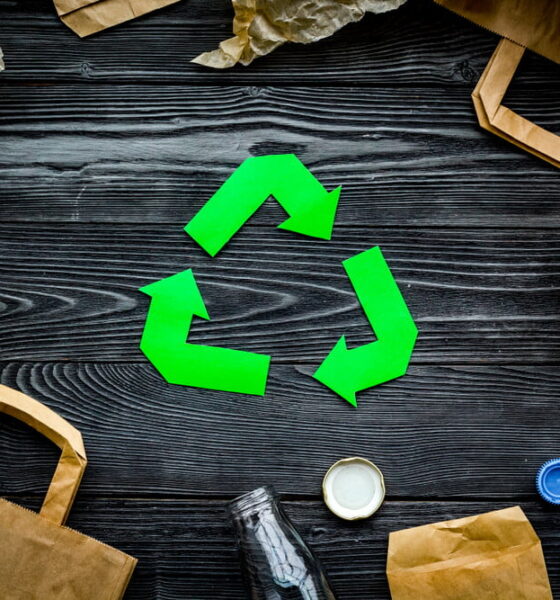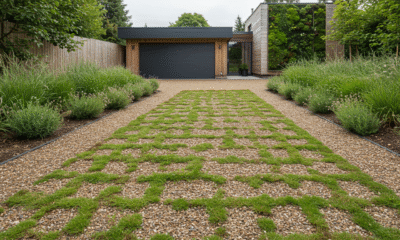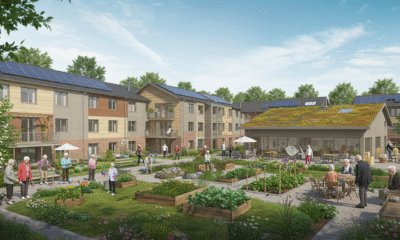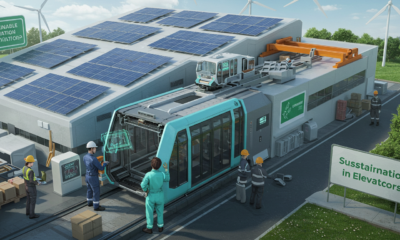

Environment
5 Eco-friendly Household Habits That Can Help the Environment
Concerns about sustainability are becoming more serious than ever. It has gotten so bad that some governments have actually started cracking down on reports they don’t like. Greece recently prosecuted a reporter for covering a case about a corporation found guilty of an environmental disaster. This wouldn’t have happened if the threat to our planet wasn’t so high.
We all have a duty to protect the planet. But what more should we do as individual citizens?
Individuals Should Take More Steps to Protect the Planet
When we think about being friendly to the environment, it’s easy to think about things that industries, factories and big businesses can do. If anything, energy, transport, agriculture and fashion industries– among others- cause the most pollution.
While this is true, individual and household carbon footprints also matter. Scientists, environmentalists and activists now agree that a change in individual lifestyles is the first step to making a positive impact in saving the planet. The core of this topic is the need to change how we do things starting from our homes.
This guide covers five eco-conscious habits that you can work into your home routine to reduce your carbon footprint. These green living habits can make a big difference.
Recycle and Reuse
Before throwing away whatever feels unnecessary in your home, take a second and consider whether it can be recycled or put to other use. To a larger extent, being eco-friendly means reducing the amount of waste created. And the first step to reducing waste is reducing its creation.
By recycling or reusing, we reduce the need for creating new products. Thus, we conserve natural resources and energy and lower the greenhouse effect- the main driver of global warming and climate change.
There are lots of things you can reuse at home to lower your carbon footprint while saving money. For instance, instead of plastic bags, how about bringing reusable paper bags when shopping? While you’re at it, consider buying in bulk and avoid individually wrapped items to reduce waste further.
The internet is full of creative ideas of how you can reuse almost anything in your home, from old newspapers, magazines and books to glass jars, plastic soda bottles and beddings.
Switch to a Plastic-Free Life
Plastic itself is not bad if we can adequately manage and recycle it. But the increased production of single-use plastics and changing consumer habits make sustainable plastic use almost unattainable. When you couple this with the complexity of plastic recycling, it becomes clear why the planet is drowning in plastic pollution.
The biggest concern that environmentalists have is that plastic takes years to decompose. It’s estimated that plastics can take 20-1000+ years to decompose. What’s even more worrying is that plastic doesn’t actually decompose. Instead, it photo-degrades, becoming smaller fragments that scatter everywhere from the water to the land and even in the air we breathe.
While plastic is hard to avoid, there are tons of ways of reducing its use at home;
- Choose eco-friendly refill packs
- Use empty glass jars for other things like storing herbs and spices
- Choose eco-friendly refill packs
- Choose a natural sponge over a plastic one
- Find different ways to reuse your plastic bottles instead of tossing them
- Buy a metal razor instead of spending on cheap disposable razors
- Consider soap refills
Maintain a Healthy Drainage System
Your home’s drainage system collects and channels wastewater and sewage to a sewer pipe along the road. The sewer pipe connects to a broader network of other lines that lead sewage to a treatment plant.
From structural issues to damaged pavements, a poor drainage system can lead to costly repairs, particularly if you don’t have a service line coverage. But as an eco-conscious homeowner, what you should worry about most is the impact that a poorly maintained household drainage system has on the environment.
The most common environmental impact of drainage system failures is water pollution. When sewage leaks happen on porous ground, harmful microorganisms can seep through and contaminate the aquifer. This may lead to a wide-scale impact on the ecosystems that human life heavily depends on.
A simple way to keep your household drainage system healthy is by installing drain guards to control the waste that goes down your sinks. Cleaning your drains regularly using drain cleaner and hot water is another effective way of avoiding major plumbing issues. Periodically inspecting your drainage system is also crucial for preventing unseen problems from deteriorating.
Avoid Food Wastage
Every day, around 150,000 tons of food is wasted in the US. That’s about 55 million tons of food per year or approximately US$48.3 billion. Tossing away edible food is bad economically and in terms of its effects on the environment.
By wasting edible food, we waste the precious resources used to produce, transport, store and process it, on top of the labor that goes into each of these steps. Secondly, when food rots in landfills, it gives off methane gas, which is 25x worse than carbon dioxide in terms of trapping heat in the atmosphere and causing climate change.
One way of cutting back on food waste is purchasing just enough for a week’s meal plan. In addition to being mindful of your shopping routine, you should also come up with ways to consume all the food you bring home. And don’t always throw away your leftovers. Consider freezing it for later use or using it as an ingredient for another meal.
Make Your Home a Green Smart Home
Smart homes are on the rise, and so are green smart homes. It’s common for most people to use these names interchangeably. But smart homes are not necessarily green. The major difference between a smart and a green home is the purpose for each.
With a smart home, the goal is to add convenience and boost security. A smart home will also save you money on your utility bills by assisting in water reservation and cutting energy waste.
On the other hand, a green smart home is designed to boost its occupants’ efforts to lower their carbon footprint. While both homes rely on automation, the core of a smart green home is the material selection, green energy and healthy living space. Such homes also go by several other names, including eco-living homes, eco-smart homes and green builds.
The following are the key components of a smart green home:
- Reliance on renewable energy
- Energy efficiency
- Water efficiency
- Waste reduction
- Indoor air quality
- Toxics reduction
- Sustainable building materials
- Light management systems
- Rainwater harvesting
- Vegetation
- Compost bins
You will be impressed by all of the benefits that these steps will have for your home and the planet.
































